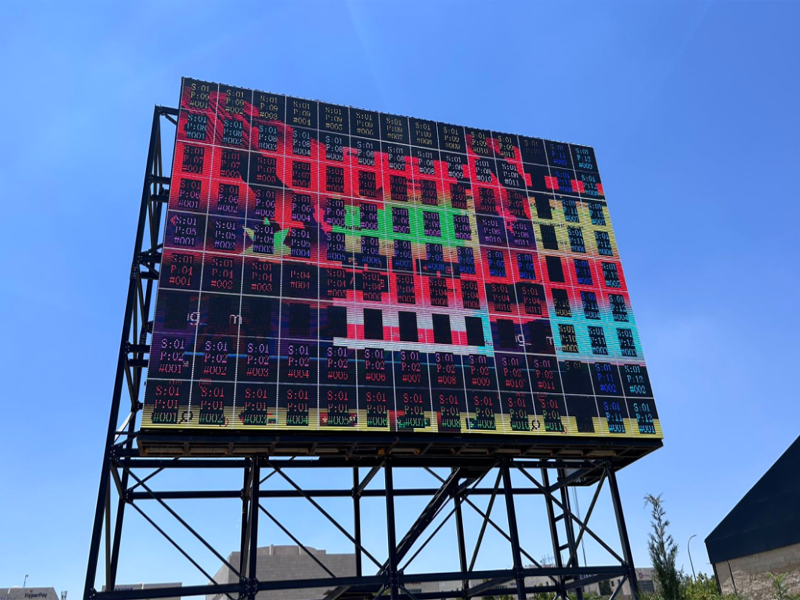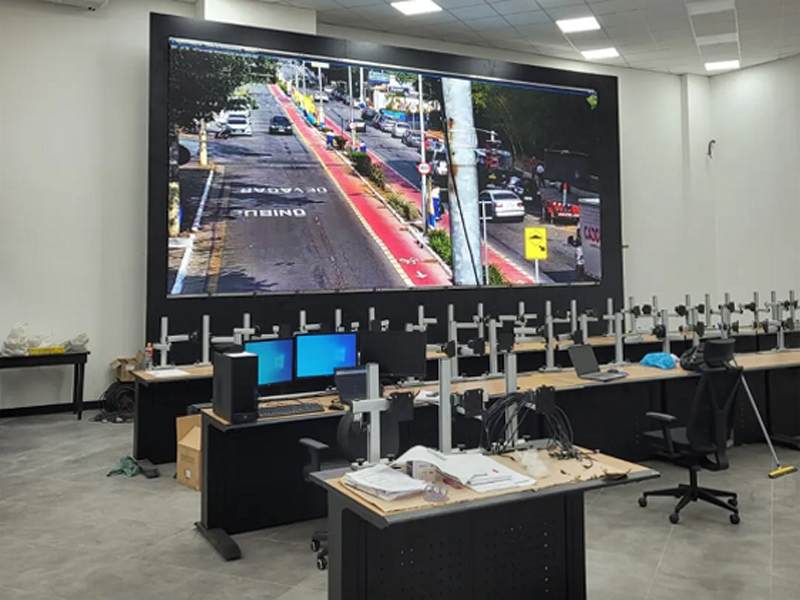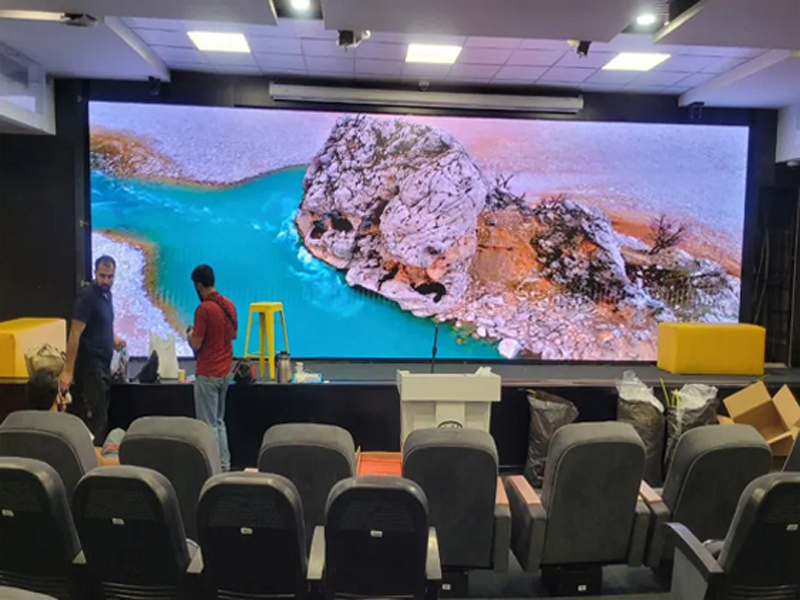Today LED screens are quite widespread in the world. They are used for advertising, television studios, touring artists, sports events and so on. And since this is a complex product, it is difficult for the majority of buyers to choose a LED screen correctly. Let’s try to understand what are the technical characteristics of a LED screen.
- THE PLANE OF THE SURFACE OF THE SCREEN
The LED screen’s surface must be perfectly flat, deflection across the screen surface not more than ± 1 mm, otherwise you may experience image distortion and a “dead zone” noticeable when viewing images at an angle with the largest deviation. The surface uniformity depends on the geometry accuracy of both the cabinet and modules.
- BRIGHTNESS
Brightness of LED screens is measured using a specific concept – output of candelas per square meter (cd / m2). The higher the number, the higher the brightness. Usually, indoor screen brightness is ≥ 800 cd / m2, outdoor ≥ 4000 cd / m2, if outdoor screen is under direct sun rays, than ≥ 6500 cd / m2, otherwise the image will be dim. LED screen brightness mainly depends on the used LEDs. It can be measured by a special device – light meter. This device converts light energy into electric current, and measures the photocurrent with microampermeter.  LED screen operation at maximum brightness significantly reduces its life – you should take this fact into account when buying a LED screen. It is more practical to choose brightness parameters exceeding your requirements, and then reduce brightness by changing settings – this will increase the life of your screen.
LED screen operation at maximum brightness significantly reduces its life – you should take this fact into account when buying a LED screen. It is more practical to choose brightness parameters exceeding your requirements, and then reduce brightness by changing settings – this will increase the life of your screen.
- ANGLE
Angle directly affects the number of spectators, and of course this figure should be increased to the maximum. It mainly depends on the LED chip construction. Usually, the SMD configuration angle is 120 ° / 120 ° (horizontal / vertical), for the DIP configuration – 1- 120 ° / 60 ° (horizontal / vertical). Read more in the article: “LED screen construction: basic concepts”.
- WHITE BALANCE
White balance is the LED screen’s characteristics that influence the white color quality. Ideal white color would be when red, green, and blue are in ratio 1: 4.6: 0.16. In case of deviation from this ratio a white color deviation will occur. For example, it may be a bluish white or yellowish-green.
- REFRESH RATE
Refresh rate is another important characteristic, especially for TV studios. If the LED screen has a low refresh rate, then when shooting video image on the screen will be flicking and transverse lines will be “beating” the image. Usually, this characteristic is ≥1000 Hz, but sometimes 3000 Hz or more are necessary. For more information about refresh rates, see article “LED screen construction: basic concepts”.
- COLOR DEPTH
Color Depth: modern LED screen color richness is made possible by combining LEDs of primary colors – red, green, blue (RGB) and is estimated at 16.5 million colors. The accuracy and reliability of the image displayed depends on this LED screen characteristic.
- PROTECTION FROM THE ENVIRONMENT
Outdoor LED screen should have an excellent waterproof protection. The case, cables and connectors must be resistant to any outside weather. Be sure to pay attention to the screen’s IP-level. IP is an international standard for protecting electrical equipment against external influences, it is also applicable to Russia. Marking code looks like: IPXX, where XX is a two figures. The first figure gives an idea of protection against accidental contact with electrical current and protection from mechanical damage (penetration of solid objects). The second digit defines the degree of protection against moisture ingress.
- COOLING
In order to minimize disruptions and prolongate its life, LED screen should have a cooling system (in summer the temperature inside the screen can reach 100 degrees). Air conditioning is optimal.
- FAULTY PIXELS
Usually it is explained by a faulty cable or poor contact in the socket. If you encounter such problems, just call our technical specialist on a toll-free number: +7-800-700-86-80, we will advise you on this issue.
- THE COLOR DIFFERENCE BETWEEN MODULES
This is caused mainly due to faulty connections between modules and sockets or a faulty control system.
LED SCREEN FEATURES. SUMMARY: The LED screen specifications mentioned are an important point to which you should pay special attention when buying a LED screen.













